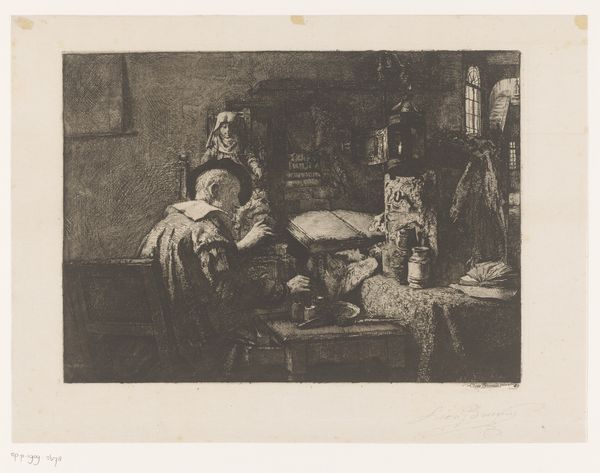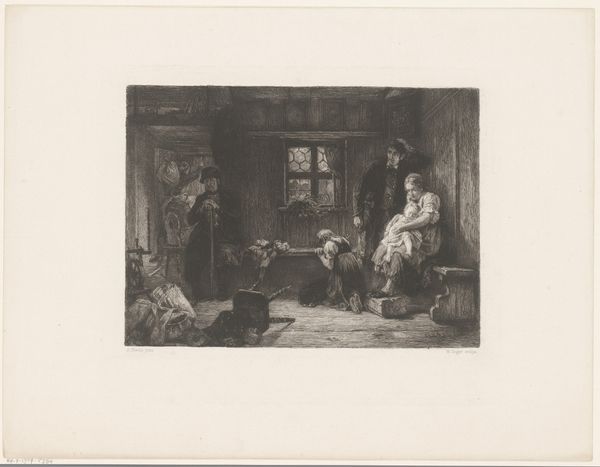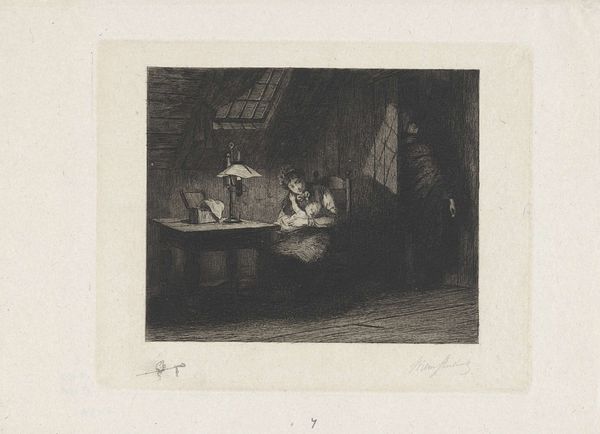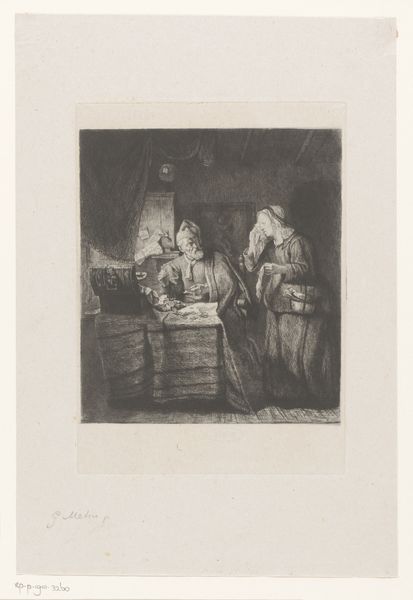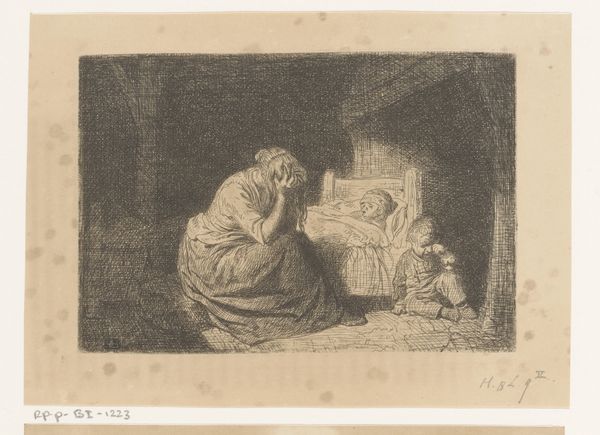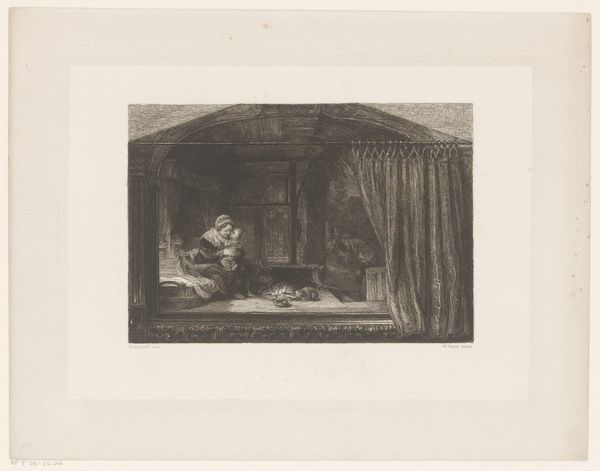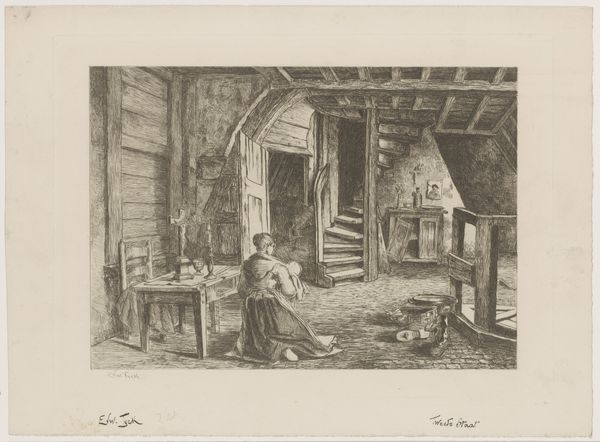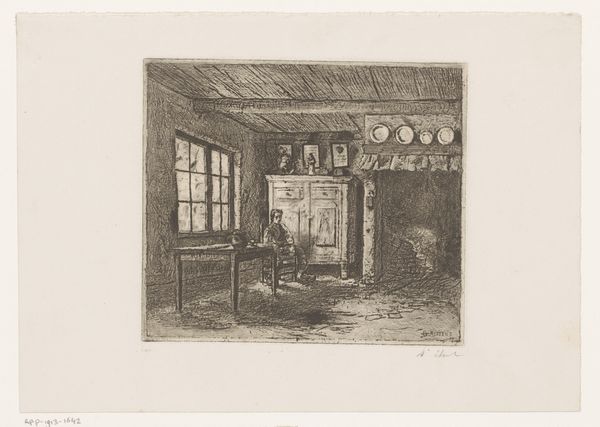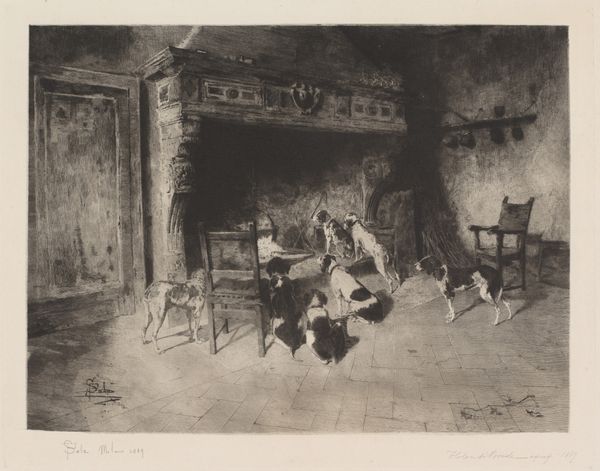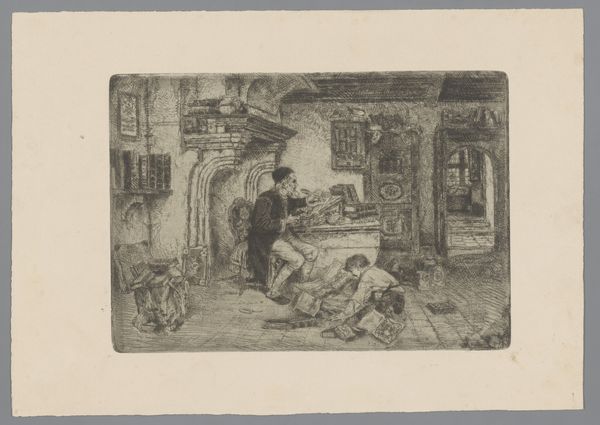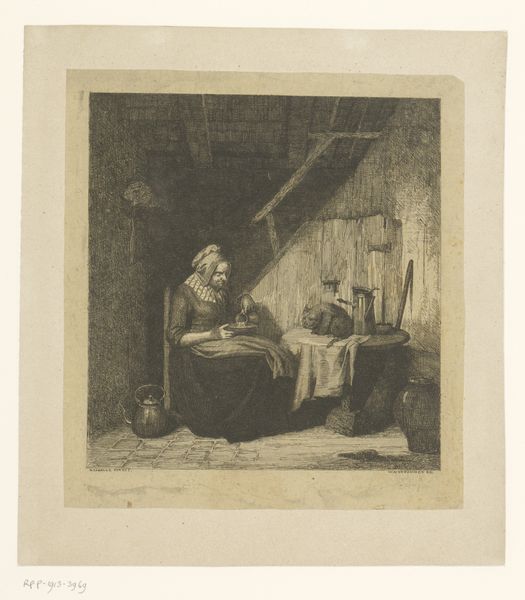
drawing, print, etching
#
drawing
# print
#
etching
#
genre-painting
#
realism
#
monochrome
Dimensions: height 119 mm, width 158 mm
Copyright: Rijks Museum: Open Domain
Curator: Looking at "Zittende vrouw in een interieur" ("Seated Woman in an Interior") by Jan Hendrik Scheltema, etched before 1888, one immediately notices a certain... quietude. The density of the etching gives everything this rather closed in somber feeling, don't you think? Editor: Yes, it’s a study in tonal range. Observe how Scheltema masterfully contrasts the darkness of the fireplace with the lighter areas around the window. It's through these values that he shapes our perception, almost sculpting light itself. Curator: That contrast, though, can be read through the lens of the domestic sphere for women in 19th century Europe, particularly women from working class or rural backgrounds. The light and shadows, become metaphors. The bright window--the outside world-- versus the enclosing fireplace—a place both of gathering and of confinement. Editor: An interesting observation. Semiotically, we can also see how the fireplace might function not just as a literal space but as a focal point. Everything directs your eyes towards that. Note the textured hatching drawing you to that heart, giving the whole artwork rhythm, even if in darkness. Curator: And think about this: genre-painting—which this is—rose in popularity precisely during the industrial revolution, showing quaint glimpses of life supposedly untouched by progress. And who bore the brunt of holding on to tradition, holding together hearth and home? Often, it was women. She becomes a figure who grounds notions of regionalism or even nationalism. Editor: Perhaps. The visual economy is, however, undeniably clear. From a structuralist point of view, that contrast in light articulates the tension in the work overall, this isn’t necessarily anchored in the political realities, but within artmaking. Curator: Even in that seemingly "simple" visual tension we see a social commentary if we understand realism as a movement committed to portraying ordinary life but also social injustice. What do you take away from it all, in the end? Editor: The artist definitely succeeds at creating mood, that palpable quiet and a depth by leveraging shadow. There is an undeniable talent for technique here. Curator: I leave thinking about how something so seemingly humble like a genre scene still contains these deep running narratives around labor, gender, and the march of progress. The monochrome quality brings it back into any age, really.
Comments
No comments
Be the first to comment and join the conversation on the ultimate creative platform.
